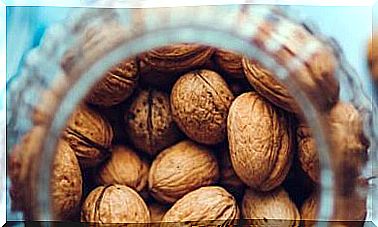How To Organize A Vegan Fridge
The contents of the fridge perfectly reflect the quality of your diet and probably your current or future health.

The proportions of each food category or the type of packaging say a lot about it, and also how much you enjoy the meals. What is the refrigerator of a vegan who follows a healthy diet like?
How to keep fruits and vegetables in the refrigerator
Fresh seasonal foods should occupy 70% of the volume of the refrigerator.
They are the foods that contain more vitamins and antioxidant and protective substances whose consumption is related to a lower incidence of many diseases. Make sure there are foods of at least four colors:
- Yellow and orange (plums, carrots, apricots …)
- Reds (peppers, raspberries, cherries …)
- Greens (cabbages, lettuce, spinach …)
- Purple (blueberries, beets, red cabbage …), the richest in protective substances.
Who Said A Vegan Refrigerator Is Sad?
The best way to preserve vegetables
Lettuce and other vegetables should not go directly from the shopping basket to the fridge.
Separate the leaves from the lettuce, wash them with fresh water, centrifuge them and arrange them in layers, separated by kitchen paper, inside a container. They will keep longer and crispier, and they will be ready to eat.
You can do the same with spinach, cabbage, arugula, lamb’s lettuce, aromatic herbs and other vegetables, and you will have them ready to add them to your green smoothies.
On the other hand, remove the leaves from the carrot bunches, otherwise they will continue to absorb nutrients.
The leftover shelf and “meals for tomorrow”
The top shelf – the one farthest from the freezer – is usually the least cold and where omnivores place dairy products and deli.
In the refrigerator of a vegan it is an appropriate place to store leftover food or preparations that facilitate the meals of the following days (for example, cooked rice or legumes).
For this, use glass containers that allow you to discover the content with a simple glance. Remember that cooked food should not be kept for more than 2-3 days.
The protein drawer
The refrigerators come equipped with a drawer for meat and fish. Don’t fill it with anything. Take advantage of it to place foods rich in protein, such as soy yogurts, seitan, tempeh and tofu in all their forms and presentations.
The less complex the commercial preparations, with few and well-known ingredients, the better.
At the door
On the shelf of the bottles of a vegan refrigerator there are no commercial sodas filled with sugar or sweetener, or cow’s milk.
In its place, a healthy vegan places a variety of healthy foods and drinks: vegetable milks (soy, oatmeal, rice, etc.), gazpachos and homemade smoothies.
On top of the drinks, on the shelf that has an accessory for eggs, you can put the organic jams without added sugars or additives and the vegetable patés based on soy or nuts (almond, cashew or peanut, better made at home. than commercial).
It can also be a good place for fermented foods that contribute live bacteria to your gut microbiota, such as tamari (soy sauce), miso, tempeh, soy yogurt, or homemade sauerkraut and rejuvelac.
And on the top shelf of the door you can store the vegetable “Parmesan” and the bottle with flax oil (by the way, it is not true that at room temperature it spoils in a few days and its appreciated omega-3s are denatured, but the cold it will not hurt and will lengthen its conservation).
Better cardboard trays than plastic
Don’t spoil the photo of your fridge by filling it with plastic. This material always has secondary effects on health and the environment. It also insulates from the cold, so no plastic film, polystyrene trays or other containers.
Instead, use paper bags, cardboard trays, and glass containers.
The ideal temperature: do not overdo it with the cold
If your refrigerator has the option to regulate the temperature precisely, choose 6-8 ° C and –18 ° C for the freezer.
For each grade you lower your bill will increase by 6% and you will not get more benefits.
In refrigerators without a thermometer, these temperatures are achieved by placing the thermostat at points 1 or 2.
Foods that don’t need a fridge
Remember that many fresh foods do not need to be kept in the fridge. In fact, it is better that they are outside to preserve their properties and taste.
For example, tomatoes suffer from the cold, responsible for the pulp losing flavor and acquiring a floury texture.
Summer and tropical fruits and vegetables (peaches, melons, nectarines, avocados, bananas, aubergines, zucchini or peppers) with a large proportion of water also do not do well in temperatures below 10 ° C.
An added reason for fruits that are slightly green is that the enzymes that allow them to ripen are inhibited.
Buy small amounts of these foods so that they do not spoil if you leave them at room temperature, in a dark and ventilated place.
If you prefer to store these foods in the refrigerator, keep it on the least cold shelf (the one furthest from the freezer or in the drawers for vegetables, where the temperature is around 8-10 ° C).
Other foods that you should keep out of the refrigerator :
- Bakery foods because they spoil faster than outside.
- Chocolate and coffee do not need cold, except when the ambient temperature is so high that the former threatens to melt (above 30 ° C).
- Flours and grains of cereals and legumes are kept long enough in the pantry (in airtight glass jars or cans to protect them from moths).
- Of course, you already know that potatoes, onions and garlic should be stored outside, in a dark and cool place.









